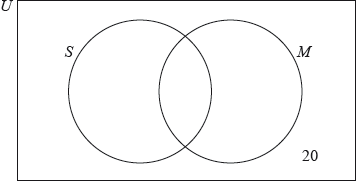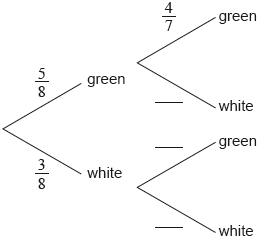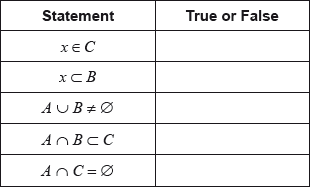| Date | May 2022 | Marks available | 5 | Reference code | 22M.2.SL.TZ2.9 |
| Level | Standard Level | Paper | Paper 2 | Time zone | Time zone 2 |
| Command term | Find | Question number | 9 | Adapted from | N/A |
Question
The time it takes Suzi to drive from home to work each morning is normally distributed with a mean of minutes and a standard deviation of minutes.
On of days, it takes Suzi longer than minutes to drive to work.
Suzi will be late to work if it takes her longer than minutes to drive to work. The time it takes to drive to work each day is independent of any other day.
Suzi will work five days next week.
Suzi will work days this month. She will receive a bonus if she is on time at least of those days.
So far this month, she has worked days and been on time of those days.
Find the value of .
On a randomly selected day, find the probability that Suzi’s drive to work will take longer than minutes.
Find the probability that she will be late to work at least one day next week.
Given that Suzi will be late to work at least one day next week, find the probability that she will be late less than three times.
Find the probability that Suzi will receive a bonus.
Markscheme
METHOD 1
or (M1)
attempt to solve for graphically or numerically using the GDC (M1)
graph of normal curve for and OR and
OR table of values for or
(min) A2
METHOD 2
or (M1)
(A1)
valid equation using their -score (clearly identified as -score and not a probability) (M1)
OR
(min) A1
[4 marks]
(M1)
A1
[2 marks]
recognizing binomial probability (M1)
OR
(M1)
A1
[3 marks]
recognizing conditional probability in context (M1)
finding (may be seen in conditional probability) (A1)
(may be seen in conditional probability) (A1)
(A1)
A1
[5 marks]
METHOD 1
recognizing that Suzi can be late no more than once (in the remaining six days) (M1)
, where is the number of days late (A1)
(M1)
A1
Note: The first two marks may be awarded independently.
METHOD 2
recognizing that Suzi must be on time at least five times (of the remaining six days) (M1)
, where is the number of days on time (A1)
OR OR OR (M1)
A1
Note: The first two marks may be awarded independently.
[4 marks]
Examiners report
In part (a) many candidates did not know to use inverse normal to find a value. Some did find , then rounded it to 3 sf and got an incorrect value for sigma.
Part (b) was mostly well done.
In (c) most recognised the binomial and handled 'at least one' correctly.
In (d) many recognised conditional probability, but most candidates were not able to find the intersection of the events as P(1) + P(2).
In part (e), those candidates who did understand what to do often misunderstood that they needed to look at 1 or no more lates and just considered one more late. Something similar happened to those who approached the question by considering the times Suzi was on time.
This question was only correctly answered by a few, and students tended to perform either very well or very poorly.





